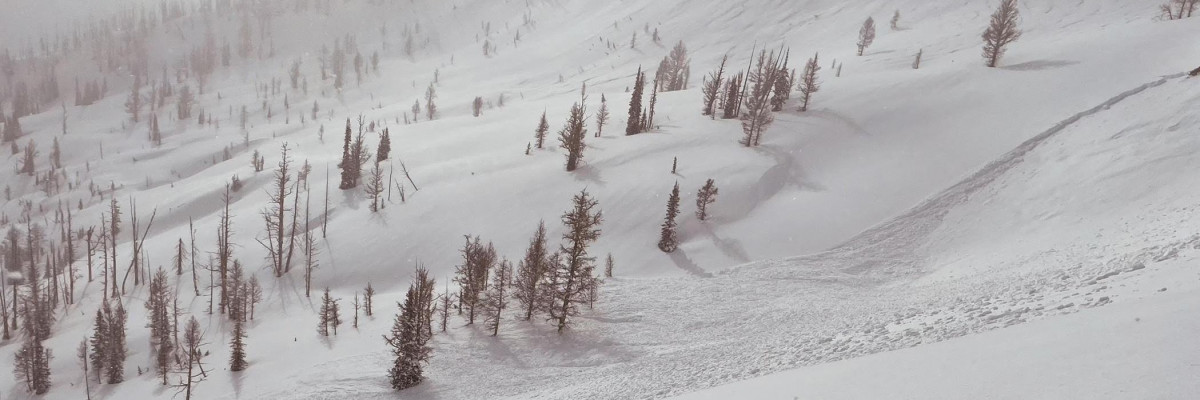The avalanche warning has been extended for the southern Mission, southern Swan, Rattlesnake, and southern and central Bitterroot mountains. The avalanche danger for the west central Montana backcountry is HIGH. The avalanche hazard is increasing with continued snowfall, rising temperatures, and wind. Human triggered avalanches are certain. Avalanches may run long distances. Travel in avalanche terrain is not recommended. This avalanche warning is valid till Monday, February 08, 2021 . The avalanche warning will either be extended or terminated at 7:00 am on February 08, 2021.
Weather and Snowpack
Strong winds and new snow are creating dangerous avalanche conditions. Today in the southern Missions, picked up another 12 inches of snow and saw active transport of snow to leeward aspects. New snow is testing the weak layers in the snowpack. We were able to remotely trigger slides yesterday at Gash Point in the central Bitterroot on multiple aspects on buried weak layers. We had shooting cracks and propagations at Lolo Pass. These are all signs to stay away from avalanche terrain. Yesterday in the Rattlesnake we were getting shooting cracks and remote triggering slides on 30 degree slopes. Natural slides were reported by the warming hut on north facing slopes in the Seeley Lake area.
Avoid traveling in avalanche terrain today. Avoid being under run out zones. Expect the avalanche danger to continue to be elevated as more snow and wind continue till Monday. Beware of slopes above you.
The Bottom Line
Travel in avalanche terrain is not recommended. Avoid runout zones. You can trigger an avalanche remotely from the side, below or above you. Natural avalanches are likely.
This warning will be terminated or extended tomorrow at 7:00 pm.
Ski and ride safe.
























